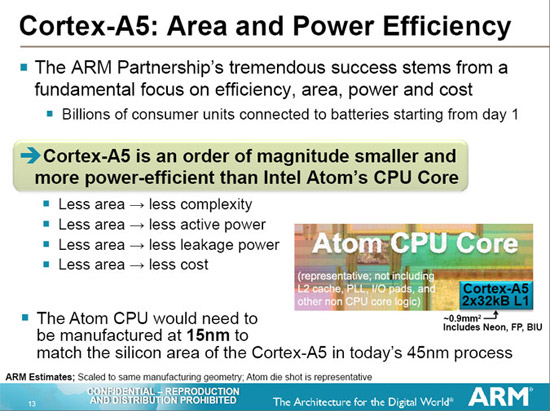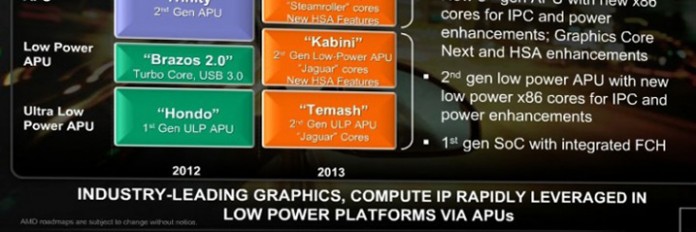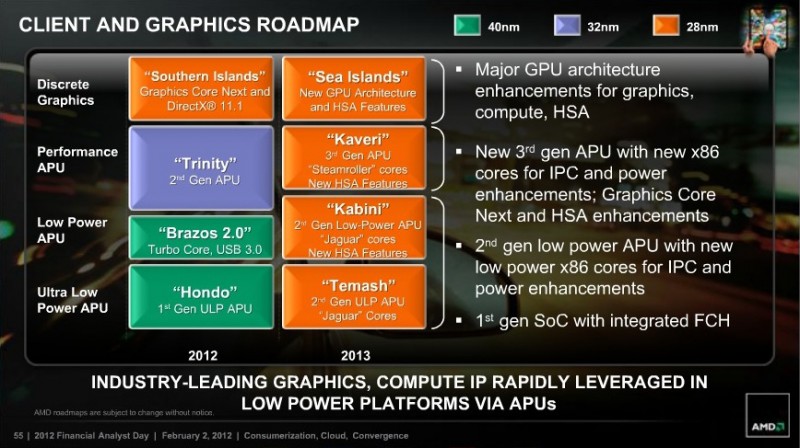AMD and ARM just needed a day to take the new partnership to the next level. AMD has revealed that in 2013 it will add ARM cores to its APU circuits. First will be the application processor Cortex-A5 that gives AMD’s APU circuits support for the TrustZone platform.
TrustZone is developed by ARM and is simply a hardware-based security platform that is licensed by nearly all smartphone makers and other companies that use the ARM architecture. AMD will need its own security platform when increasing its exposure on the mobile market to support mobile payment solutions and various copyright technologies. Instead of spending lots of money on developing its own platform it has decided to team up with ARM, a pretty natural step following the joint venture; HSA Foundation.

För att stödja TrustZone i sina APU-kretsar krävs dock hårdvara från ARM och i AMD:s första kombinerade x86 + ARM kretsar är det den energisnåla applikationsprocessorn Cortex-A5 som får äran. AMD kommer under 2013 att lansera APU-kretsar med x86-baserade CPU-kärnor, en integrerad DirectX 11 grafikdel samt en Cortex-A5 processor integrerade på samma kisel. Detta betyder att AMD kommer skapa sig APU-kretsar som arbetar med x86-instruktioner mot vanliga program, men samtidigt har en dedikerad säkerhetsprocessor baserad på ARM-arkitekturen. Till skillnad mot exempelvis ARM och Intel som har säkerhetsteknikerna integrerade i sina egna processorkretsar (Intel Trusted Execution Technology är proprietär teknik och kan inte licensieras av AMD).
Cortex-A5 kärnorna ska enligt AMD vara både väldigt energisnåla och ta upp liten yta av APU-kretsarnas kiselyta. Med 28nm-teknik skulle Cortex-A5 processorn, som är den minsta Cortex-kretsen ARM utvecklar idag, täcka ungefär 10-15 kvadratmillimeter. ARM-kärnorna ska placeras till höger om nordbryggan i AMD:s APU-kretsar, men det är fortfarande osäkert hur många kärnor AMD kommer bygga in då Cortex-A5 går att bestycka med upp till fyra kärnor.
– By adopting the industry-standard approach to security that TrustZone technology embodies, AMD and ARM will provide a consistent approach to security spanning billions of Internet-connected mobile devices, tablets, PCs and servers − whether they are powered by ARM processor-based solutions or AMD x86 APU, – AMD press release.
AMD will primarily target its most energy efficient APU circuits since the TrustZone platform is the most vital among mobile devices. First will be the mobile APU circuits Temash and Kabini that will launch in 2013, but the company will widen the use of ARM logic from 2014 and onward, when it will use the Cortex-A5 processor in more products.
AMD’s view on the future and not the least the ARM architecture is harder to interpret. The company did not reveal any more details during AMD Financial Analyst Day 2012 on how the ARM logic will integrate and even less about how it sees the use of other processor architectures than x86.
Source: AMD
















